THE HISTORY OF THE GENDER PAY GAP

It's been more than a century since women first started making strides in the workplace. But despite the huge leaps women have made in terms of pay equality in the workplace, the national gender pay gap is around 18%.
The struggle for pay equality has been drawn out and hard, we have brave organisations and individuals to thank for the progress that has brought us to this point. Let's take a look at the events that lead to the breakthroughs in how women are treated in the workplace today.
Clementina Black and The Women's Trade Union Association.
Clementina Black was the honorary secretary of the Women's Trade Union Association. For years she travelled the country making speeches trying to persuade women to join trade unions. In 1888, she attended the Trade Union Congress where she moved a motion on equal pay for equal work.
Clementina was also involved in the formation of an organisation that tried to urge customers to put pressure on employers who paid very low wages to women, which led to further boycotts and protests.
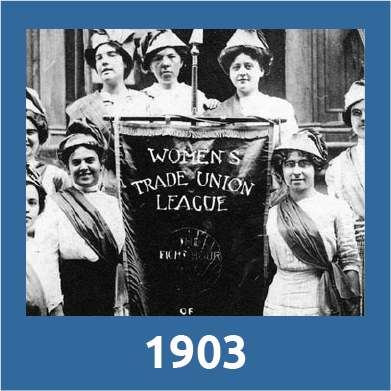

The National Federation of Women Workers.
The NFWW was established by Scottish suffragist Mary Macarthur, out of frustration that existing trade unions were not open to female members. The male-dominated unions regularly opposed the idea of "organised women" who would damage the status of trade unionism by the nature of having women who could not vote be part of the political movement.
The organisation raised funds and supported very successful strikes due to Mary Macarthur’s ability to attract wide support amongst newspapers.


Women's work rights during World War One.
The involvement of women in the workplace during The First World War drastically changed perceptions of their role in society. During the war years, women undertook jobs normally carried out by men and proved they could do the work just as well.
Between 1914 and 1918, an estimated two million women replaced men in employment. Suffragette leaders Emmeline and Christabel Pankhurst played an instrumental part in this, by calling a truce with the government and refocusing their goals to make sure that women "are able to keep the country going, to get in the harvest, to carry on the industries", while the war was raging on.
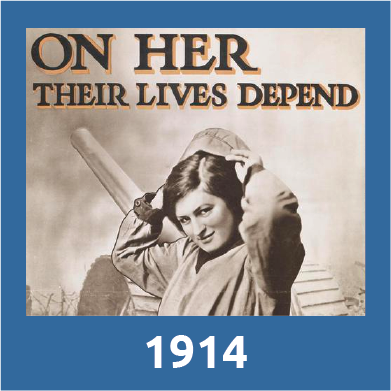

Women's work rights during World War Two.
When Britain went to war again, previously forbidden job opportunities opened up for women. When women began to enter the industrialised workforce and the weapon industry, previously dominated by men, women's segregation began to diminish.
Britain underwent a labour shortage where an estimated 1.5 million people were needed for the armed forces. It was during this "labour famine" that propaganda aimed to induce people to join the labour force and do their bit in the war. Women were the target audience in the various forms of propaganda because, even though they were replacing jobs with the same skill level as a man, they were still paid significantly less due to their gender.


The 1944 Education Act and equal pay for teachers and civil servants.
After the war ended, the report of the Royal Commission had recommended that female teachers and civil servants should be awarded equal pay. The Education Act of 1944 stated that women teachers would no longer be forced to leave their jobs when they married.
After mass public campaigning, including demonstrations and petitions, a scheme was established in 1955 to secure equal rates of pay for men and women doing the same job in the non-industrial civil service. In its wake, women teachers were given equal pay in 1961.
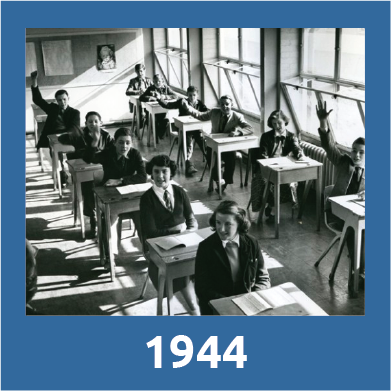

Ford sewing machinists strike of 1968.
The strike started when women sewing machinists at Ford's Dagenham plant were informed that their jobs were graded in Category B (less skilled production jobs), instead of Category C (more skilled production jobs). In addition, they would be paid 15% less than the full B rate received by men.
The women in London walked out, followed later by the machinists at Ford's Halewood Body & Assembly plant. The machinists made car seat covers, and, as stock ran out, the strike eventually resulted in a halt to all car production.
The strike ended three weeks after it began, as a result of a deal that put them in the same category as men. The strike’s success was a landmark win for pay equality and a trigger for the passing of the Equal Pay Act 1970.
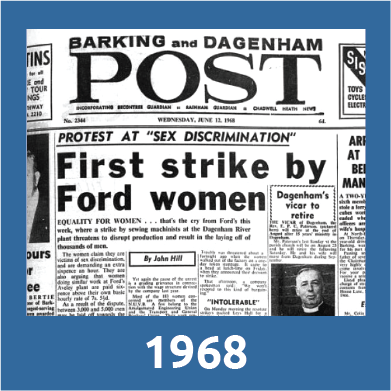

1975 Sex Discrimination Act and the Equal Pay Act.
The Equal Pay Act prohibited any less favourable treatment between men and women in terms of pay and conditions of employment. It was based on the Equal Pay Act of 1963 in the the United States. It has now been mostly superseded by the Equality Act 2010.
The 1975 Sex Discrimination Act established the Equal Opportunities Commission (EOC) whose main duties were to work towards the elimination of discrimination, to promote equality of opportunity between sexes and to keep under review the workings of the Sex Discrimination Act and the Equal Pay Act 1970. The EOC helped individuals bring cases to Employment Tribunals and to the courts.
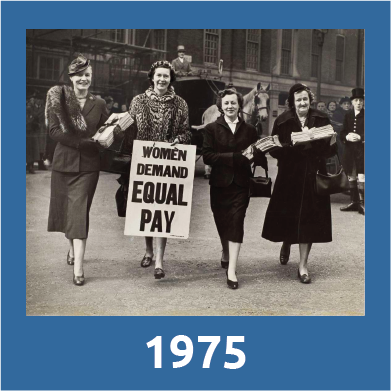

Julie Hayward’s fight for pay equality.
Julie Hayward started as an apprentice cook, working in the Cammell Laird shipyard in Birkenhead. When she and her fellow apprentices completed their training, the three men in the group were categorised as craftsmen, while she was deemed a labourer. Being promoted to the title of craftsman included a raise, while being a labourer had no such perks.
Julie decided to take the issue up with her employer. Her case centred on the fact that although she was working in a kitchen, the level of training required and the skills and demands made upon her were equivalent to many of her male colleagues in the shipyard. After three industrial tribunals, and a decade long court process, she won an appeal at the House of Lords.


The work ahead.
While the initial fight for pay equality demanded the same pay for the same work, to address the issue today, you’d need to dig a little deeper.
Tackling the pay gap issue now means examining cultural factors. For example, the kinds of roles predominately carried out by women and how valuable women’s contributions in the workplace are perceived to be. One of the main issues is the way we have historically valued work done by women compared to work done by men.
That’s where our Equal Pay Claims come in. Our aim at Pay Justice is to stay on the forefront of the fight for equal pay by shining a light on the pay disparity issues in the private sector – challenging big brands and pushing them to do better by their hard-working employees regardless of gender.

Contact us
Any questions? Get in touch.
Please be assured that strong victimisation laws are in place to prevent any negative action being taken against you for bringing a claim. If you have any concerns about this or any other questions about the claim, you can call 0161 883 3468 and speak to our customer service team in confidence.
Copyright 2019 - Pay Justice Ltd - All Rights Reserved


